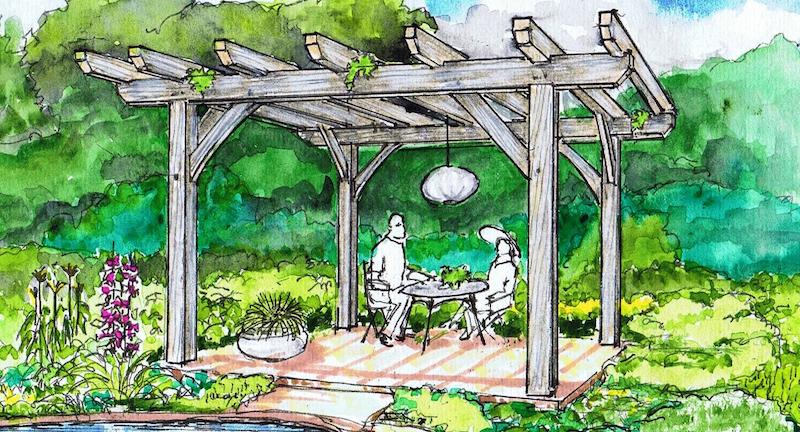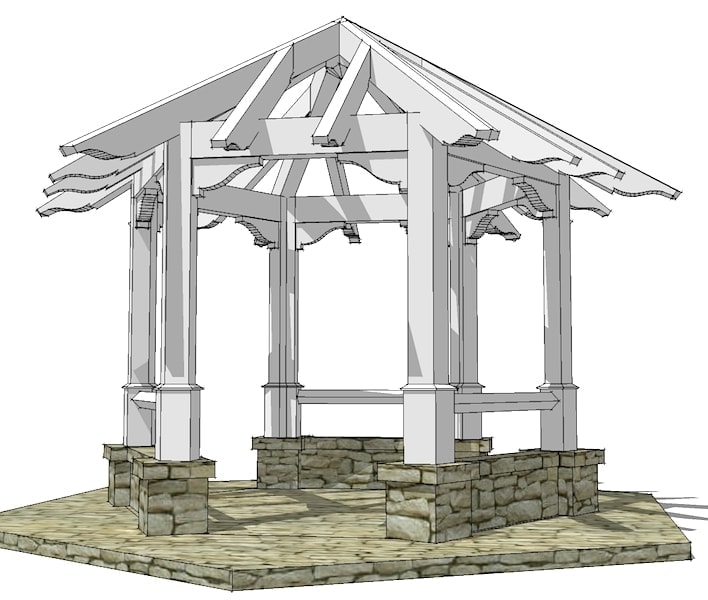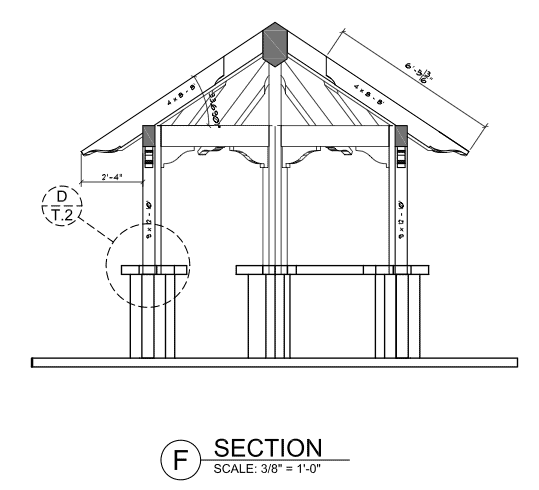
Whether you’re building a new home or moving into a new-to-you place, creating a master plan for your yard and property is a good way to get a handle on what can be a big, expensive project. Planning your outdoor space from the start will ensure your enjoyment of your property.
Think of your property as a part of your living space and make it an appealing and a cohesive part of your home. This holistic approach to your home can help you define how you want to portray and use your yard. It will also help determine how much time and effort you want to put into it over the course of years.
Use Your Imagination
It doesn’t cost anything to dream. Whether you have a pocket-sized city lot or country acreage, you surely have aspirations of a perfect outdoor space to relax, entertain, garden or a place for the kids to play. Go ahead and scour the internet and magazines for ideas, regardless of price and suitability. Once you’ve gotten that out of your system, go over those ideas again with a critical eye.
Ask yourself what you really want from your property, how much you can afford and how much time you are willing to devote to maintaining your yard, patio, timber frame pergola or deck and plantings.
Also, if this is your retirement home, consider what you want five or 10 years from now. As we age, those lovely expanses of garden and yard may look less like an enjoyable hobby and more like work we would just as soon not be responsible for or can afford to maintain.
Think about ways to simplify and economize on your dreamscape and come up with both a short-term and long-term plan to make it a reality.
Examine Your Property
Spend some time walking around your property. Consider what you love, what you hate, what’s in decent shape and what’s got to go.
You may have some heritage trees on your property that just need some cleaning up, but there may also be volunteer trees, overgrown shrubs and poorly placed flowerbeds that need to go away.
Verify the physical condition of outbuildings, sheds and decks. Decide if sheds should be re-positioned or camouflaged to enhance your yard.
Consider the geographical contours of your property. If the ground runs downhill to the patio, you may need to re-grade part of the yard or create a swale to channel water away from the house.

Octagonal Timber Frame
Be Aware Of Local Regulations
Your homeowner’s association or local government has an overabundance of rules and regulations. Make sure you’re aware of these ordinances before commencing on any projects. Ignoring things like fence height and setback, construction permits and homeowner association imperatives can cause a world of inconvenience if you’re caught.
Get It Down On Paper
It’s one thing to dream and talk about your plans, but putting it down on paper in the form of a blueprint makes it a lot easier to see if your ideas really will function on your property.
Drawings don’t need to be fancy, but they should be to scale. Graph paper makes this easy and simple geometric shapes serve just as well as fancy renderings at this stage of the game.
Look At Your Space From The Inside Out
Whether you’re inside or outdoors, you property should be visually appealing. Consider your windows as landscape works of art that decorate your rooms. If you’ve a choice in positioning a tree or flowerbed, look at the area from indoors as well as outside to find a location that enhances both views.
Try to position utility sheds, refuse containers, air pumps and dog runs away from the direct line of sight of windows that are often used for a view.
Tweak Individual Aspects
Once you’ve gotten your grand plan down on paper, it’s time to start refining the individual areas and components of your property. Your wish list can come into play here with small refinements and additions.
Small projects go a long way to fixing shortcomings and implement some of the ideas on your wish list. Things like a privacy screen, a vine-covered arbor or swapping out high maintenance plantings for hardscape or self-supporting native plants may turn a ho-hum area into the space you’ve been dreaming of. Generally not part of any major projects, these small-scale plans keep your eye on the prize as you continue to improve your property.
Implement Your Plans In Logical Phases
The beauty of a comprehensive plan is that you can stagger projects to suit your budget, available time and weather conditions. You can also do preparatory work for future additions.
If you’re laying pavers for a new patio, you can run electrical, water and gas lines for future amenities. If future plans include a built-in gas grill or even an outdoor kitchen, running those utilities when the ground is already dug up is a great time and money saver.
